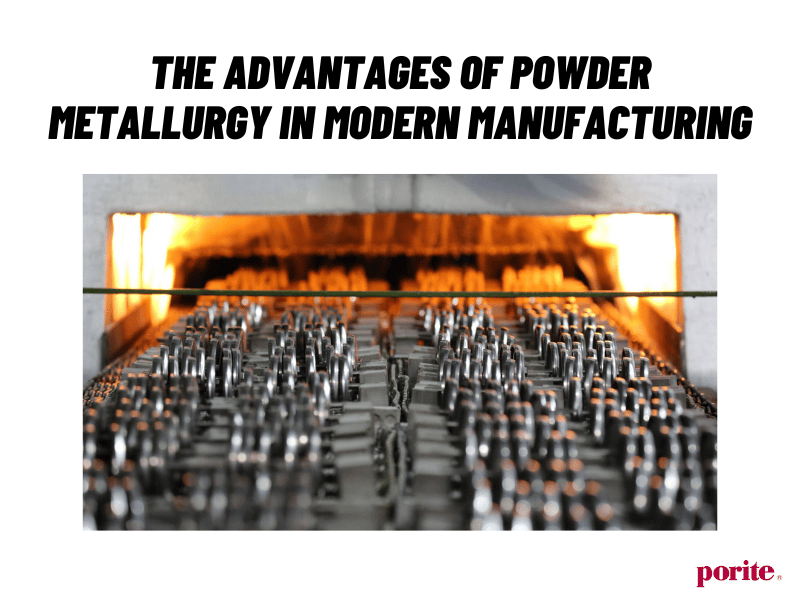News Release
Media
The Advantages of Powder Metallurgy in Modern Manufacturing

Introduction to Powder Metallurgy
Powder Metallurgy (PM) is a highly efficient manufacturing process that involves compacting and sintering metal powders to create precision-engineered components. This technology is widely used across industries such as automotive, aerospace, industrial machinery, and electronics due to its numerous advantages over traditional metalworking methods like casting, forging, and machining.
In this article, we explore the key benefits of powder metallurgy, including material efficiency, cost-effectiveness, and design flexibility, and compare it with conventional manufacturing techniques.
________________________________________
Key Advantages of Powder Metallurgy
Advantage 1. Superior Material Efficiency
One of the most significant advantages of powder metallurgy is its ability to maximize material usage. Unlike traditional machining, which involves cutting away excess material, PM processes utilize nearly 100% of the raw material. This reduces waste and lowers material costs, making it an environmentally friendly and sustainable choice for modern manufacturing.
Comparison with Traditional Methods:
- Casting & Forging: Produces excess material in the form of runners, gates, and burrs, which require additional machining or reprocessing.
- Machining: Generates a significant amount of scrap metal, increasing material costs.
- Powder Metallurgy: Uses only the required amount of metal powder, minimizing waste.
Advantage 2. Cost-Effectiveness and Reduced Production Costs
Powder metallurgy is a cost-efficient manufacturing method, especially for mass production. Several factors contribute to cost savings:
- Lower Material Costs: The near-net shape forming process eliminates the need for extensive machining.
- Energy Savings: PM requires lower processing temperatures compared to casting and forging.
- Minimal Secondary Operations: Many components produced using PM require little to no post-processing, such as additional machining or heat treatment.
- High Production Rate: PM is highly suitable for large-scale automated production, reducing labor costs.
Comparison with Traditional Methods:
- Casting: Requires high energy input and extensive finishing operations.
- Forging: Involves expensive dies and high-pressure equipment.
- Machining: Time-intensive and generates costly waste material.
Advantage 3. Design Flexibility and Complex Geometries
Powder metallurgy enables the production of intricate and complex geometries that would be difficult or impossible to achieve using conventional manufacturing methods. The ability to create detailed designs without extensive machining makes PM ideal for precision parts with specific material properties.
Key Design Advantages:
- Ability to integrate multiple features into a single component.
- Capability to manufacture unique shapes with internal cavities.
- Consistent dimensional accuracy and repeatability.
- Ability to produce components with controlled porosity for specialized applications (e.g., self-lubricating bearings, filters).
Comparison with Traditional Methods:
- Casting & Forging: Limited to specific shapes and may require multiple processes to achieve the desired geometry.
- Machining: Can achieve complex shapes but is time-consuming and expensive.
Advantage 4. Enhanced Material Properties and Performance
Powder metallurgy allows for precise control over material composition, resulting in enhanced mechanical and physical properties. This is particularly useful for applications requiring wear resistance, corrosion resistance, or specific hardness levels.
- PM parts can be engineered to have high strength and durability.
- Controlled porosity allows for applications such as oil-impregnated bearings.
- Heat treatment and alloying options provide tailored material properties.
Comparison with Traditional Methods:
- Casting: Prone to internal defects like shrinkage and porosity.
- Forging: Produces strong components but requires additional machining for precision.
- Machining: High material integrity but often leads to waste.
Advantage 5. Sustainability and Environmental Benefits
With growing emphasis on sustainable manufacturing, powder metallurgy stands out as an eco-friendly process. It aligns with modern green manufacturing practices by:
- Reducing Waste: Nearly 100% material utilization minimizes scrap.
- Lowering Energy Consumption: Uses less energy than traditional casting and forging.
- Supporting Recycling: Metal powders can be sourced from recycled materials, reducing the environmental impact.
Comparison with Traditional Methods:
- Casting: High energy consumption and emissions.
- Forging & Machining: Generate significant amounts of waste material.
________________________________________
Conclusion
Powder metallurgy is a transformative manufacturing technology that offers numerous benefits over traditional methods. With its high material efficiency, cost-effectiveness, design flexibility, superior mechanical properties, and environmental sustainability, PM is increasingly becoming the preferred choice for producing high-quality, precision components.
As industries continue to seek advanced manufacturing solutions, powder metallurgy remains a cornerstone of innovation, offering unmatched efficiency and performance in modern production. Whether in automotive components, aerospace parts, or industrial applications, PM is shaping the future of metal fabrication.
Would you like to explore a specific application of powder metallurgy in more detail? Let us know!
